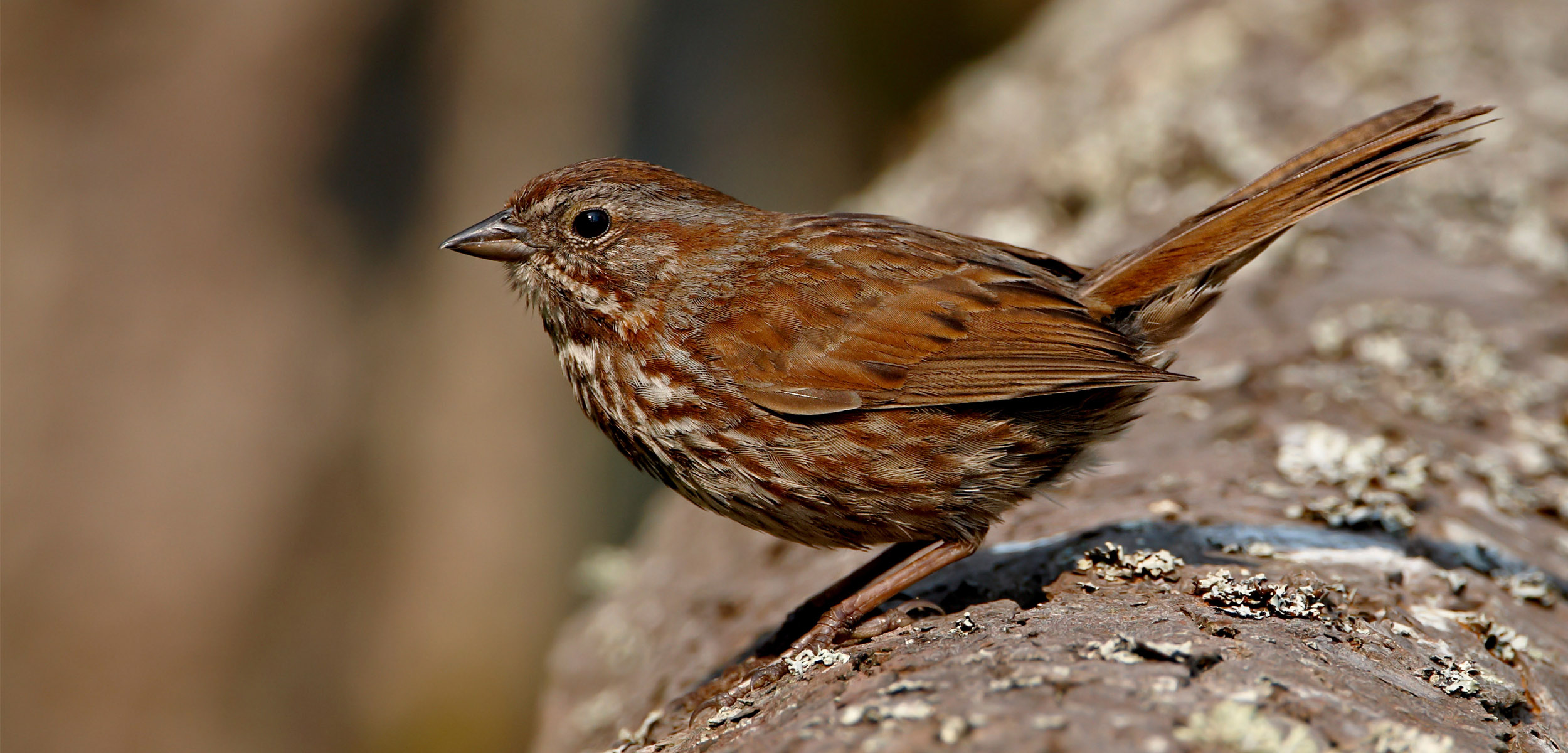The Transgenerational Cost of Fear
Scared song sparrows have fewer offspring, and their offspring are less likely to survive and thrive.
Article body copy
Wolves eat elk. Sharks eat fish. Hawks eat sparrows. For decades, the prevailing scientific understanding has been that predators mainly affect prey communities by, well, turning them into dinner. But a recent study offers perhaps the most complete evidence yet that predators can significantly influence prey populations without taking a single bite.
In a highly controlled experiment, population ecologists and couple Liana Zanette and Michael Clinchy, along with graduate student Marek Allen, all at Western University in Ontario, showed that just the sound of predators can scare song sparrows into a state that tanks their numbers for generations. The research was part of a long-term study of song sparrows living on five small islands in British Columbia’s Gulf Islands National Park Reserve.
To isolate the role that the fear of a predator plays in controlling sparrow behavior, the researchers had to carefully and deliberately ratchet up the fear factor without actually putting the sparrows at risk of predation. Their eerie experiment involved installing speakers near sparrows’ nests, and convincing the birds that predators were lurking nearby by broadcasting a mixed tape of terror made up of various sparrow eaters, from crows and hawks to raccoons and owls.
To ensure the sparrows were responding specifically to the predators’ calls, they set speakers near other sparrow nests and played non-threatening sounds such as frogs, seals, or ducks. These tracks matched the vocal traits of the predator playlists—for instance, instead of the sinister caw of a raven, these sparrows would hear the similarly harsh but friendlier honk of a Canada goose.
Despite their auditory alarm, all of the birds were perfectly safe. To ensure this, the researchers essentially eliminated the risk that these sparrows’ eggs and young would be eaten by fortifying their nests with electric fencing and a cone of overhead netting. Sparrows could pass through these protections, but the defenses kept out raccoons, crows, and other predators.
With their horror track blasting—four days on, four days off, for a span of four long months—the scientists meticulously tracked the fate of every nest. They followed each egg from hatching until the bird left the nest and either died or joined the breeding pool the following year. They ran their experiment for three breeding seasons, and monitored the young birds over the next two years of adulthood. The differences that unfolded were stark.
The sparrows plagued by the scary sounds of predators saw a 53 percent drop in reproductive success. These parents laid and hatched fewer eggs, and fewer offspring survived to adulthood. The scared sparrows’ population plummeted.
Those young sparrows that successfully grew up in this atmosphere of fear remained at a disadvantage into adulthood. Even though these birds were not themselves exposed to the scientists’ track, these birds sang fewer songs, lived shorter lives, and produced fewer offspring. By changing the way one generation of sparrows performed as parents, fear appeared to have a cumulative effect that spanned generations. The study suggests that the transgenerational cost of fear could cut the sparrow population in half in just four years.
“They’ve shown the sound of fear alone cannot only affect individual behavior, and individual fitness, but actually population trajectory,” says Dan Blumstein, a behavioral ecologist at the University of California, Los Angeles, who published a book on fear in 2020. While he was not involved in this research, Blumstein knows Zanette and Clinchy and has toured their study sites. “Their setup is really extraordinary,” he says.
The research further confirms, says Zanette, that “your early rearing condition leaves an imprint on you for your entire life.”
Almost universally, scared birds and mammals eat less and watch for danger more. As a result, frightened parents have less time to feed their young. In an earlier lab-based study, Zanette’s team found that sparrow nestlings facing similar food restrictions developed smaller brains, including in areas responsible for learning songs. Other research shows that sparrows with smaller song repertoires don’t live as long.
The profound effects of early childhood experiences also hold for humans, Blumstein adds. But even in war zones or pandemics, people may learn to live with higher risks, and wildlife might, too. “There could be learning and habituation processes that may blunt these indirect effects, but I think they’ve shown that this is clearly possible,” Blumstein says.

